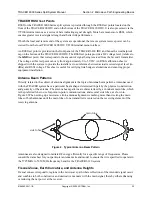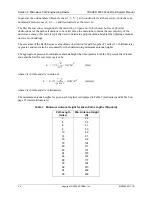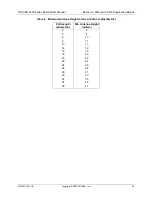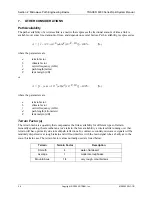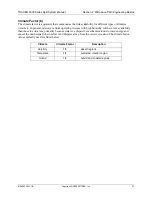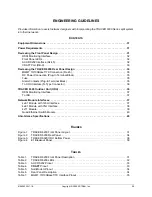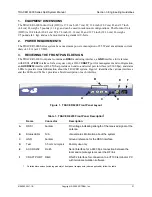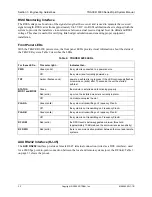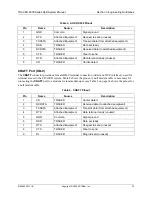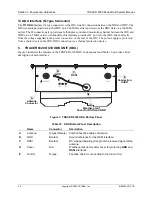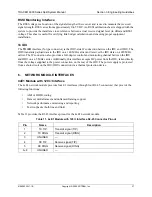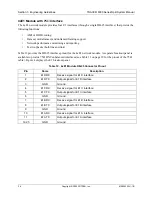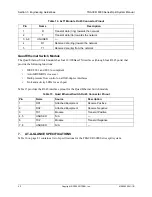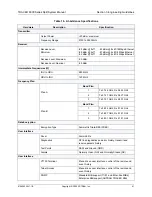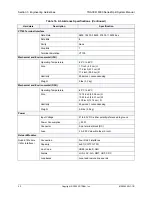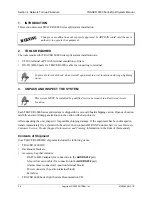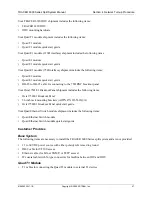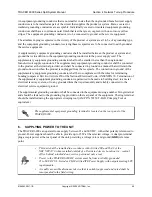
TRACER 6000 Series Split System Manual
Section 3 Engineering Guidelines
612806320L1-1B
Copyright © 2005 ADTRAN, Inc.
35
MGMT 10/100BaseT/TX Connection (RJ-45)
The physical Ethernet interface is provided by a single RJ-45 jack (labeled
MGMT
) that delivers
10/100BaseT/TX for LAN connectivity. The
MGMT
port is used for Telnet, SNMP, and TFTP access and
is not a router interface. Each port has a green
LINK
LED to indicate a valid link and an amber
ACT
LED
that blinks with data activity on the interface. Table 7 shows the pinout.
DC Power Connection (Plug-In Terminal Block)
The TRACER 6200 can operate from a supply between 21 and 60 VDC, with either polarity referenced to
ground, and consumes less than 25 W. Power supplies should be able to provide up to 25 W at the selected
voltage. Current required (in amps) is determined by dividing the power consumed (in watts) by the
applied voltage (in volts). For example, at 48 V, TRACER 6200 would draw approximately 0.52 A
(25 W/48 V). Table 8 shows the DC power connection pinout.
Fuse
The fuse holder, accessible from the rear panel of the TRACER 6200, accepts a generic 2 A, 250 V, 2-inch
slow-blo fuse.
Alarm Contacts (Plug-In Terminal Block)
An RF link down condition is indicated with both normally open (
NO
) and normally closed (
NC
) alarm
contacts on the rear panel of the TRACER 6200 system. In normal operation, the
NC
contact is electrically
connected to the common contact (
COM
) and the
NO
contact is isolated. When the RF link drops, the
NC
contact becomes isolated and the
NO
is electrically connected to
COM
. This allows RF down conditions
to be reported to external alarm monitoring systems. Table 9 on page 35 provides the alarm contact pinout.
Table 7. MGMT 10/100BaseT/TX Interface Pinout
Pin
Name
Description
1
TX1
Transmit positive
2
TX2
Transmit negative
3
RX1
Receive positive
4,5
—
Unused
6
RX2
Receive negative
7, 8
—
Unused
Table 8. DC Power Connector Pinout
Pin
Name
Description
1
+/–
Voltage
2
GND
Ground
Table 9. Alarm Contact Connector Pinout
Pin
Name
Description
1
COM
Common Contact
2
NO
Normally-Open Contact
3
NC
Normally-Closed Contact



